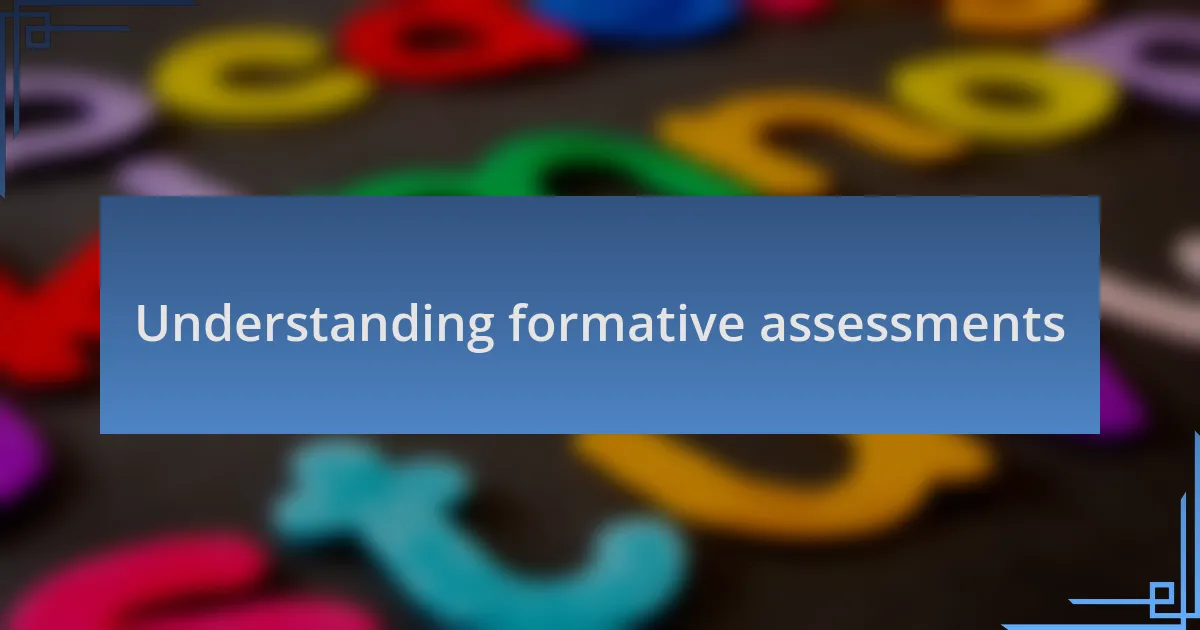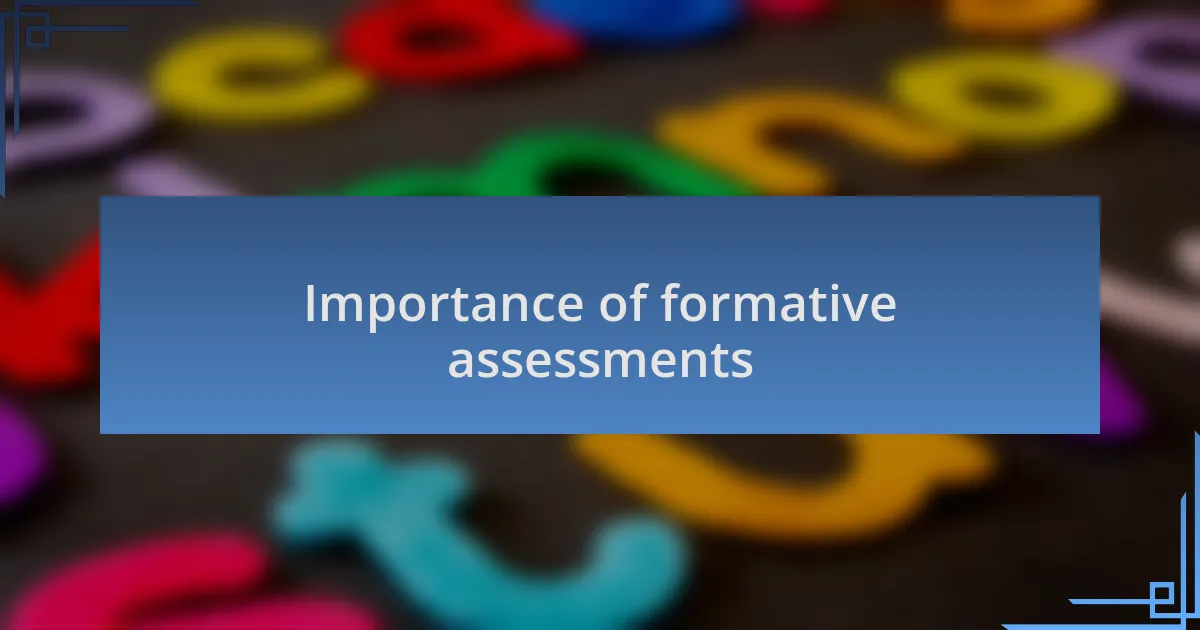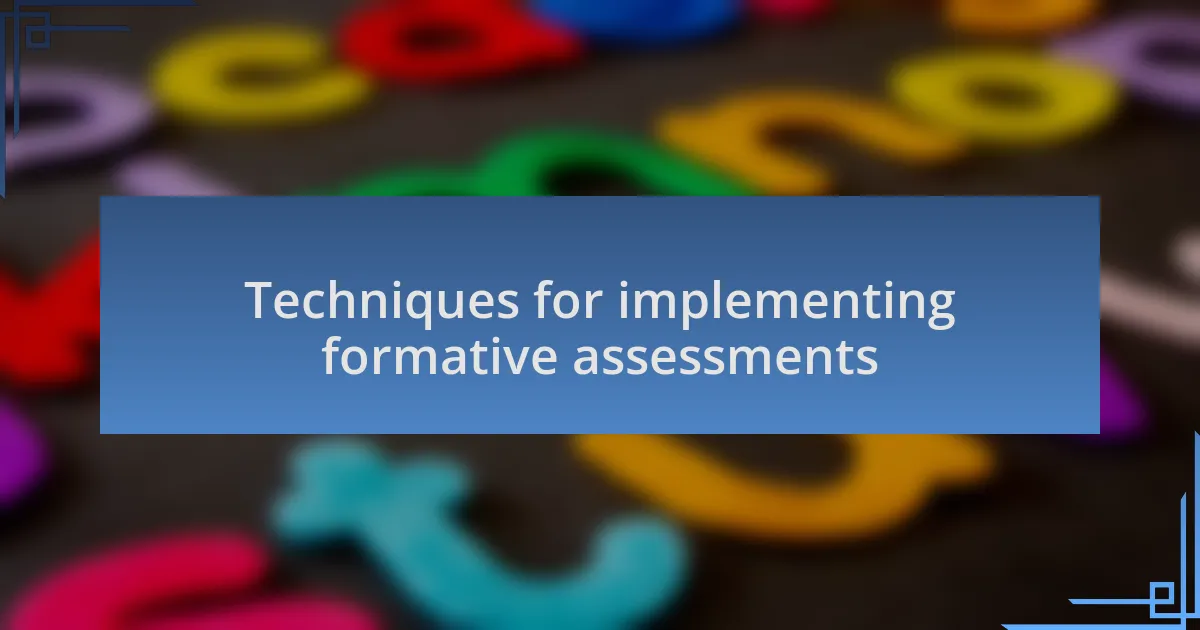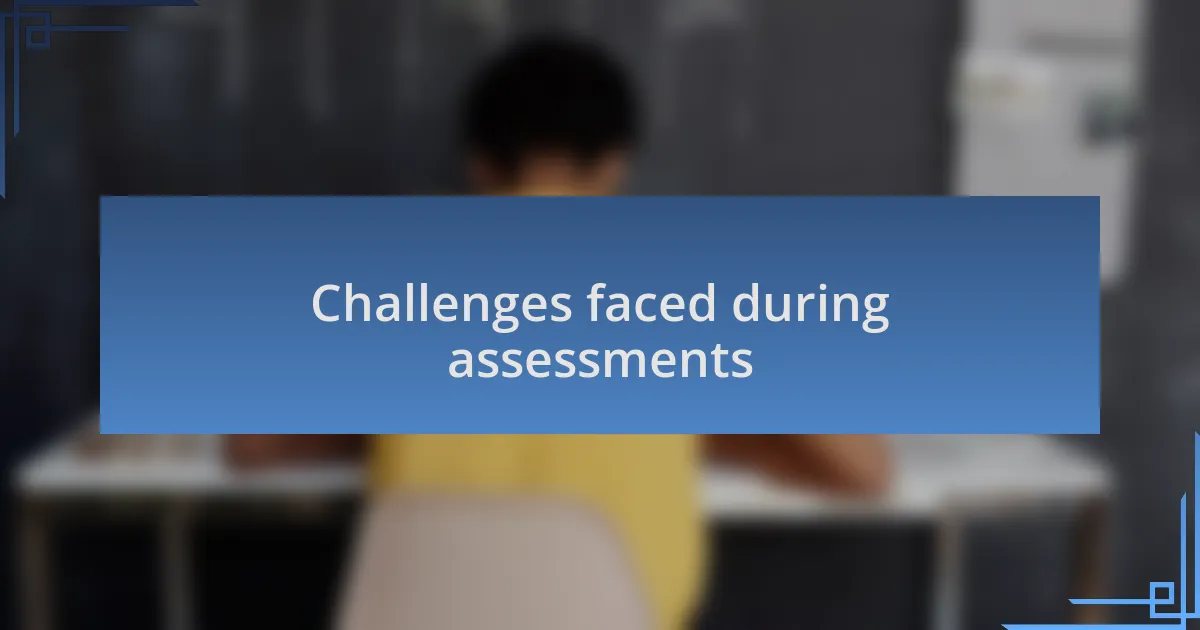Key takeaways:
- Formative assessments foster ongoing dialogue between teachers and students, enhancing engagement through real-time feedback.
- These assessments help tailor instruction to individual needs, boosting student confidence and fostering a culture of reflection among educators.
- Implementing creative techniques like exit tickets and peer assessments encourages student empowerment and collaboration.
- Challenges in assessments often arise from traditional methods not aligning with individual learning styles, highlighting the need for flexible approaches.

Understanding formative assessments
Formative assessments are essentially check-ins that allow educators to gauge student understanding throughout the learning process. I remember a moment when I administered a simple quiz in my own classroom and was surprised by how many students struggled with the material. It sparked a realization: these assessments aren’t just about grades; they’re about understanding learning gaps and adapting instruction to meet each student’s needs.
These assessments can take various forms, from quick quizzes to interactive group discussions. For instance, I once used think-pair-share activities to uncover misconceptions about a lesson. Engaging students in this way not only made them feel heard but also provided me with invaluable insights into their thought processes, transforming the way I approached subsequent lessons.
What I find particularly fascinating is how formative assessments create an ongoing dialogue between teachers and students. Have you ever thought about how feedback in real-time can motivate learners? In my experience, when students receive immediate feedback, it sparks their curiosity and makes them more invested in their learning journey. Seeing that shift in their engagement was incredibly rewarding.

Importance of formative assessments
Formative assessments play a crucial role in tailoring instruction to individual needs. I recall a time when I introduced a literacy intervention for students with dyslexia. After a series of informal assessments, I identified specific phonetic difficulties that were common among them. This understanding allowed me to customize my approach, ensuring that each student received targeted support. Can you imagine how much more effective our teaching could be if we all made adjustments based on real-time insights?
Another significant aspect of formative assessments is their ability to boost student confidence. I vividly remember a student who often felt defeated by reading tasks. By utilizing ongoing assessments, I was able to provide frequent, positive reinforcement, highlighting small successes. Over time, I saw a remarkable transformation; the same student who once hid from challenges began to tackle new tasks with eagerness. Isn’t it powerful how regular feedback can shift a learner’s mindset?
Moreover, these assessments foster a culture of reflection, not just for students but for educators as well. Reflecting on my teaching after implementing formative assessments, I noticed patterns in student responses. This data empowered me to rethink my lesson plans and adapt strategies continually. Have you ever considered how this cycle of assessment and reflection could elevate an entire classroom’s learning experience? It’s a catalyst for growth that benefits everyone involved.

Techniques for implementing formative assessments
Implementing formative assessments requires creativity and flexibility. One technique I’ve found effective is the use of exit tickets at the end of lessons. Students write a quick reflection on what they’ve learned and where they still have questions. I remember one particular student, who previously struggled to express himself, began articulating his thoughts more clearly through these simple notes. Can you see how a small shift like this can empower students to take charge of their learning?
Another technique that resonates well is the use of peer assessments. I started pairing students to evaluate each other’s work, which not only encouraged collaboration but also allowed them to see different perspectives. It was heartwarming to watch them discuss their thoughts; I noticed how their self-esteem grew when they realized they could offer valuable feedback. Have you ever seen a peer interaction spark a new understanding? It’s a transformative experience for everyone involved.
Furthermore, incorporating technology into formative assessments can enhance engagement significantly. I started using educational apps that provide instant feedback. I distinctly recall a moment when a student, who typically shied away from participation, lit up seeing her progress in real-time. It created an interactive environment where learning felt like a game rather than a chore. Isn’t it fascinating how technology can turn assessments into a fun and motivational process?

Challenges faced during assessments
Facing challenges during assessments, particularly with students who have dyslexia, is all too common. I remember one assessment day when I noticed a student staring at the paper, visibly frustrated. It hit me hard to see his anxiety; the traditional format just didn’t align with his processing strengths. Have you ever felt trapped by a method that doesn’t suit your style? It’s a moment of realization for educators that we need to adapt.
Another issue that stands out is the misconception that all students can articulate their understanding verbally or in writing. In one case, a particularly bright student struggled to organize his thoughts on paper during an assessment. Seeing his frustration was tough; it reminded me that assessments sometimes fail to capture a student’s true abilities. How do we find a balance between traditional assessments and accommodating individual needs?
Then there’s the issue of time constraints, which can be a huge hurdle for many learners. During one timed assessment, I could see some students feeling overwhelmed. I advised one student to take a deep breath and recent experiences showed me how an extra few minutes can change the outcome significantly. Have you ever seen a student flourish when given just a little more time? That’s why flexible timing should be a consideration in our assessment practices.